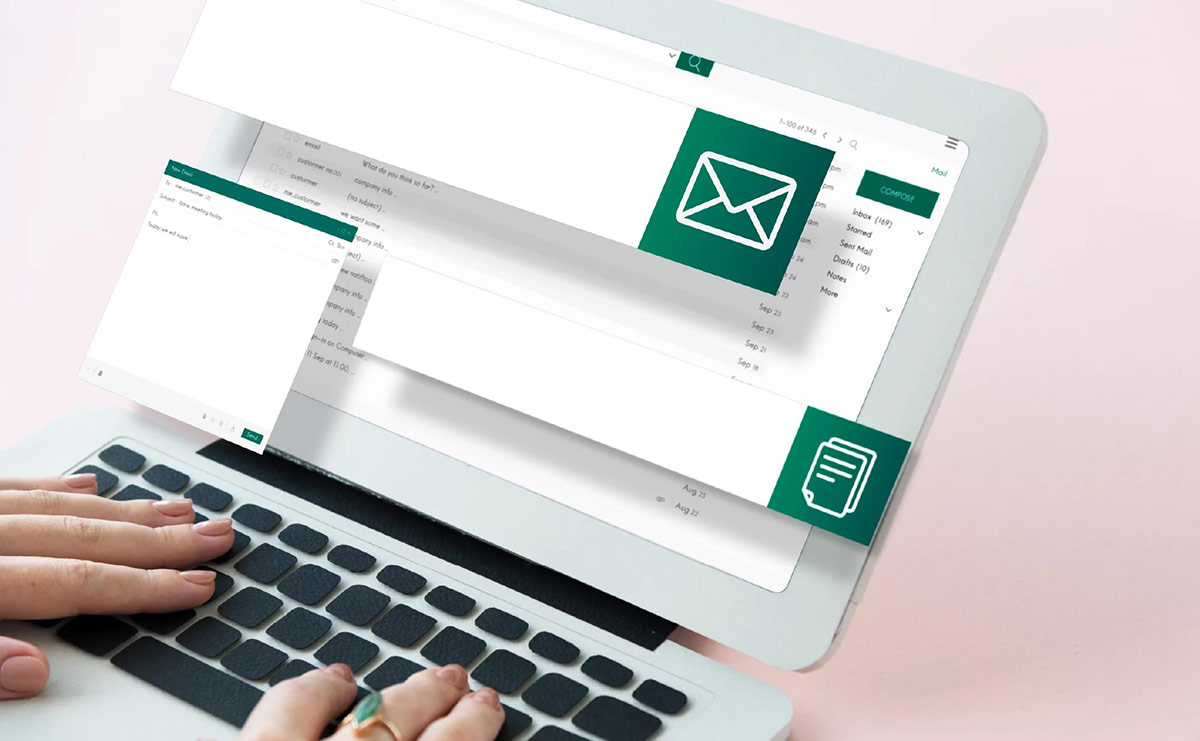Contents
We’re all united in our hatred of the endless promotional emails that fill up our inboxes. I, for one, have always wondered if anyone actually opens most of these emails with their bland subject lines. But can we do any better when it’s our turn to send marketing emails instead of receiving them? If you don’t want to make the same mistakes in your email campaigns, you must follow some proven guidelines. Using these vital email best practices, you can improve your open rates and get more conversions from your email marketing. So, make sure to find the ones that you haven’t been applying already and get cracking.
Why Email Best Practices are Indispensable to your Business
Before we get to our list of 11 email best practices, I’m going to briefly explain why you should bother with them. Are just a few more people clicking on your emails worth going through the trouble? Absolutely! What makes these best practices so critical to any campaign is that they can unlock the true potential of your email campaigns. Done right, direct marketing methods like emails can be more powerful and practical than any other. No matter how high or low your number of inbound leads, with the correct email tactics and nurture programs, you can turn more and more of them into paying customers. But there’s also the fact that poorly implemented email marketing can end up costing your business time and money. The only thing that can turn the tide between these two outcomes is making your emails as effective as possible. That’s what these email best practices are about — so, let’s dive right in.
11 Email Best Practices for a more successful marketing
I’ve compiled this list of the most practical and efficient email practices that any business can follow to get better results. If you’re not already implementing them, it’s high time you start. For your next email campaign, try to follow as many of these 11 best practices as you can.
-
Choose a short subject line that makes an impression
We’ve all received enough emails in our inbox to know how crucial the subject line can be. When you open your inbox, you can only see the name and the subject line for each email. Naturally, that’s all your recipients have to go on when deciding to open or ignore your email. So, the subject line is a primary tool for getting your leads interested enough to open your email.
There are so many ways you can go about this, but the essence is to keep the subject line brief and memorable. It should be witty, exciting, or fascinating enough to grab the user’s attention, making them want to know more about you and your business. Of course, that doesn’t mean you should go all click-bait in your headlines — it doesn’t work, and some AIs like Google may even mistake it for spam.
To find the inspiration you need to develop a good title, try looking through your inbox. What promotional or marketing emails have you opened? What about them caught your eye? Try to find a handful of emails with intriguing subjects and use them as a template. Keep at it, and you’ll be sure to get better open rates.
-
Keep your writing real and personal
At the end of the day, you’re a human being writing to another. Let this simple fact guide you in creating a simple, honest, and personal email. Buyers today are sensitive to how authentic and “real” you are in your marketing material. Granted, the emails you’re sending are part of a marketing campaign. Still, that shouldn’t mean using fake, glittery words that just sound cool. Once you come to accept that, you’ll see that it’s actually easier to write this way.
-
Use names and personalize
Even if you’re using automated software to improve your email campaign, there are ways to make each recipient feel they’re getting a unique email written with them in mind. The first step is to use their name in the greeting. Using something like “Dear [your Company’s name] Subscriber” will instantly put some distance between the reader and you. Instead, try beginning your email with a simple greeting, like “Hi, Jane.”
Remember how they ask you for your name when you sign up for an email? An effective CRM application like RunSensible can use that information to personalize the greeting. So, you can design your email and have the app insert the recipient’s first or last name wherever you want.
This greeting is only the first step in personalizing your email campaign. You can follow this with personalized content in your email or newsletter. Once you have your sales funnel in place and know your buyer personas, you can send each one the appropriate content based on their interests and their location in the funnel. Of course, you’ll need a CRM system like RunSensible, which comes with feature-rich email marketing tools.
-
Consider your brand voice
Any marketing material you or your employees write should align with your brand voice. Your brand voice is how your company speaks to its customers, showing its unique personality. If you have decided on an “approachable and honest” brand voice, for example, try to avoid sounding overconfident or arrogant. Keeping your emails in line with your brand voice means users won’t feel a jarring, sudden change in writing when they follow the email’s CTA to landing pages. That consistency will add to the trust you can inspire in your customers, and that’s worth a lot.
-
Try to use Responsive Design
The way we use the Internet has changed and is changing still. Most of us don’t have the time to do everything on laptops or PCs. Some people even do their job only using their smartphones.
With all the different devices, platforms, and screen sizes your recipients use, it’s vital to ensure everyone sees the same thing when they open your emails. Responsive design refers to the standards and methods you can follow to achieve that.
-
Include a professional but individual email signature
Data has repeatedly shown that people are more likely to trust people over an abstract company or business. In emails, that comes down to the signature you want to use at the end. Take a look at these two email signature examples:
|
“Sincerely, The RunSensible Marketing Division” |
|
“All the best, Scott Stephenson” |
Which one would make a better impression? According to data and marketing experts, the second one has a much better chance of inspiring trust (and increasing conversion) than the first one.
You should also look into a matching design for your signature. There is no reason why it should not fit in with the rest of your marketing campaign.
-
Always reward the recipient for opening the email
You should encourage your leads to open all your emails by making sure they’re rewarded with great content or deals when they do open one. No matter if it’s a marketing or transaction email, you’ll get better open rates and more conversions by giving the reader a reason to read it.
-
Keep things short
If you manage to get your recipients to open your email, the last thing you want is to make them regret it. And that’s exactly what will happen if they get tired slogging through blocks of text and heaps of content. Keep everything as short and straightforward as possible. Naturally, I’m not saying it should be all flash and no flesh. You can always provide links to direct them to appropriate landing pages and blog posts if they’re interested in learning more.
-
Use Autoresponders for opt-ins
It turns out that people are about 150% more likely to open so-called transaction emails than marketing ones. I have already devoted an article to discussing transaction emails and how they’re different from newsletters. So here, I’ll just point out that using a CRM or marketing software with “autoresponder” features can help you get higher open rates. When a visitor to your website signs up, for example, they are more likely to pay attention to emails about their sign-up. The autoresponder features of RunSensible, for example, let you make the best of this by maximizing your open rates.
-
NoReply vs individual email address names
This item in our list is so important that there are laws about it — at least in the United States. It used to be a common practice for companies to send their newsletters and other emails via noreply@example.com. This was more than a naming tradition, however. NoReply email addresses, which some companies still use today, prevent the user from responding or unsubscribing. Of course, the company may provide some other way for users to unsubscribe from their mailing list, but it won’t be as easy as it usually is.
NoReply emails are not only an inconvenience to your leads, they’re also bad for your business. You may miss out on some comments or feedback from users who sometimes like to provide them by replying to emails. There is also the fact that a simple name change can make your business look a lot more approachable and human. I’m speaking of individual email address names.
By changing the email address name from something impersonal to scott@runsensible.com, for example, you can appear more sympathetic. That means your recipients will probably want to open more of your emails and remember your brand better than they would otherwise.
-
Don’t forget A/B testing
A/B testing is a marketing expression that basically means: do both and see which one works best. It may seem too simple, but A/B testing can be an excellent way to optimize your marketing for your niche. Here’s how you do it: first, write two subject lines or even different email contents. Next, use your email marketing platform or CRM system to split your email nurture list into two sets. Send each type of email to one of the two half-lists and see which ends up with higher open rates. Of course, you’ll need a CRM and marketing tool like RunSensbile to find out the open rates for your emails.
What now?
Okay, so you’ve managed to improve the essential aspects of your emails; now what? Do you just sit and wait for the money to pour in? Of course not. Marketing is never done and over with. It can always be better, more optimized. When it comes to email marketing, we have only scratched the surface with this list of email best practices. To really optimize your marketing campaigns, you will need a more in-depth guide to email marketing best practices. You will also need a CRM system with marketing and sales functionality. RunSensible is a SaaS CRM solution that comes with all the necessary features to maximize your email open and conversion rates. RunSensible is an excellent choice, even if you’re running a small business with just a handful of employees. It’s affordable and only provides the tools you actually need, without any extra “bloatware.” You can also read up on what a CRM is and why it’s a good idea to get one.
FAQ
What are email best practices?
They’re a series of tips and guidelines you can follow to improve your marketing and sales figures.
What is the best practice for sending an email communication from a brand?
There is no single “best practice” for marketing and promotion emails. There are many you need to observe and steps you must follow. I’ve assembled some of the essential best practices in this article.
How to master email marketing?
To master anything you have to spend a lot of time and effort on it. But there are also some tips and tricks that can get you there faster and make sure you get better results in the meantime.
Disclaimer: The content provided on this blog is for informational purposes only and does not constitute legal, financial, or professional advice.






